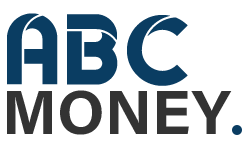If you haven’t yet heard of Sales Enablement, 2019 will likely be the year it makes itself known in your business. At its most basic, Sales Enablement is the tools, resources and training that help salespeople sell more. Whether it’s led by sales, marketing or a separate Sales Enablement function, it all amounts to different versions of the same thing:
- Aligning sales and marketing operations to focus on customer experience and revenue growth
- Providing content, market insight and support to salespeople for every stage of the customer journey
- Using technology and software to streamline sales processes
- Increasing learning and development opportunities so that salespeople are better able to serve customers.
Sales Enablement or Customer Enablement?
Sales Enablement is an evolving function. It’s only relatively recently that Sales Enablement professionals banded together to form the Sales Enablement Society and create a working definition of the role of Sales Enablement in a business. While this endeavour was undertaken in an attempt to standardise this relatively new field, it’s fair to say that Sales Enablement activities will still look different from one business to the next. In fact, as the industry evolves, it’s becoming clearer than ever that the purpose of Sales Enablement is as much to improve the buying process as it is to boost the selling process.
In 2019, we expect Sales Enablement professionals will find themselves thinking as much about the buyer as they do their sales team. So let’s take a look at how that might manifest, given the intention of Sales Enablement as outlined above.
Aligning Sales and Marketing Functions to Focus on Customer Experience
What difference does it make to customers if a business’s sales and marketing departments are out of sync? The answer is, a lot. When sales and marketing functions aren’t singing from the same hymn sheet, customers receive a disjointed experience, which may be enough to turn them off a company altogether.
Moreover, when the two departments are siloed, the volume of customers tends to be less, since marketing and sales may be working with a different perspective on who the ideal customer actually is.
Presenting a united front, a unified brand message and a consistent tone will all help to reassure customers and build trust. Meanwhile, working together on lead qualification and nurturing helps ensure the right contacts are going through to sales and being followed up in the proper way.
Providing Resources for Every Stage of the Customer Journey
One of the reasons for the existence of Sales Enablement is the transformation in buyer behaviour. Customers have gone from trusting most of the buying process to the sales rep to undertaking the majority of the journey alone and only contacting a salesperson once they are almost ready to make a decision. The result? Salespeople have less of an impact on customer decisions.
It is the responsibility of sales, marketing and Sales Enablement, therefore, to make sure there is plenty of material out there to answer customer questions as they conduct this research. Where previously you may have thought about using content to build brand awareness or as part of a sales presentation, you now have to think about content for every stage of the buying journey. And that means answering as many customer questions as you can, in as many ways as you can. Blog posts, case studies, ebooks, white papers, infographics, newsletters and — increasingly — video, are all essential components of your content strategy.
The goal is to empower the customer with all the knowledge they need to make their buying decision — and to pick you. If this sounds like inbound marketing, it is. It’s all about customer — and sales — enablement.
Using Technology to Streamline Sales Processes
The more time salespeople spend on admin, the less time they have to spend selling. Sales Enablement tools such as CRMs, content management systems, and learning and development tools are all becoming key parts of a sales rep’s arsenal. Tracking the customer journey, tailoring content offers to suit individual customers, and using software to enable increased levels of learning all allow salespeople to deliver an improved customer experience. If you don’t already employ some of these, expect to see them coming to your offices next year.
With the rise in AI, we are already seeing an increase in the number of Sales Enablement tools offering a degree of artificial sales intelligence. We can expect to see even more of this in 2019.
Increased Learning and Development Opportunities
With all the tools and tech out there, there are a lot of hard skills to learn. But when it comes to soft skills, ask any sales training professional what it takes to be a top salesperson and you’ll get the same answer: ask great questions. It’s all about uncovering buying motivations, emphasising the impact of doing nothing, and presenting yourself as a resource — a consultant, if you like — rather than a seller. New ways of learning, such as microlearning, which enables you to do a little bit of learning every day, will come into their own in 2019.
It could be a response to the craziness in the world right now, or perhaps it’s the influence of Millennials and Z-genners as they rise up in the workforce. But, ultimately, what we’re seeing in buying behaviour and sales trends is a tendency to favour more human-to-human interaction — greater personalisation, more listening and, overall, an increased sense that the customer is the centre of every business. In 2019, businesses that don’t implement a buyer-centric growth strategy may find themselves facing an uphill struggle.

